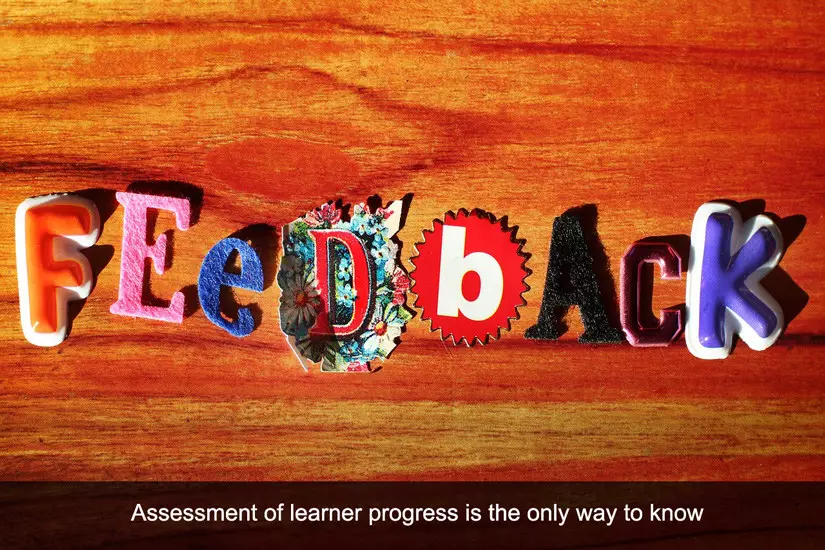LMS Must-Have #1: Robust Assessment and Feedback Options

Whether you already have an LMS, need to get one, or are looking to switch to a new one, there are many different features that must be carefully considered. One that is all too often overlooked is the importance of assessment and feedback. In this article, assessment refers to evaluating the progress and achievements of the learners, while feedback refers to learners’ evaluation of the course content and delivery. Both are essential if you want your eLearning efforts to deliver superior results.

The Importance of Learning Assessments
Assessment of learner progress is the only way to know if your eLearning content is achieving what you need it to do, which is teach people in your organization things you think they need to know. If you’re not assessing the learning that’s taking place through your LMS, then all you really have is a content delivery system. That’s all well and good, but you also want to know if the participants are learning anything – and especially if you want to sell your courses to a broader audience beyond your organization.
Download the free white paper How You Can Assess The Effectiveness of Your Training – Kirkpatrick Model
When learning is conducted face-to-face in a classroom or training session, instructors have all kinds of ways to pick up on whether or not their students are learning. They can pay attention to the level of energy in the room as an indication of overall engagement. They can read the body language of learners. You pay attention to what sorts of questions are being asked or if any questions are being asked at all. You can ask questions to instantly gauge content familiarity before launching into a new topic or to see what has been absorbed during the last fifteen minutes of teaching.
In the eLearning environment, many of these assessment options simply aren’t available because you’re not physically with the learners while they’re engaging course material. But there are plenty of tactics that can be used to assess eLearning. The trick, of course, is that your LMS has to have the features necessary to conduct robust learning assessments.
Learning Assessment Options
Your LMS should support a wide range of learning assessment options, including both quantitative and qualitative assessments. Here are some of the things you should expect your LMS to deliver in terms of assessments:
- Easy Quiz, Test and Exam Creation and Placement. You should be able to create your own quizzes, tests and specific questions for both. You should also have the flexibility to place quick quizzes within lessons for the most immediate feedback and review that helps learners absorb the material faster. You’ll also want to make sure you have the opportunity to design comprehensive exams that happen at the conclusion of a course.
- Multiple Question Formats. A good LMS should give you the ability to design different types of questions in order to align the assessment you need with the course material. At a minimum, your LMS should support the following types of questions: Multiple Choice, True/False, Sequence/Sort/Order/Ranking, Essay/Short Answer/Explanation, Multiple Choice with Explanation, and Hotspot or Find-the-Error questions.
- Assessment Customization. Your LMS should have advanced settings that allow you to customize the logistics of how your assessments are presented, such as randomizing the order of questions, setting up time limits, allowing re-takes, and so on.
- Observation Checklists. An observation checklist is a productivity tool that allows organizations to observe and document the progress of learners and team members. If you want a consistent, organized and easy way to improve skills and proficiency documentation, the eLeaP Observation Checklist tool is what you need.
The Importance of Learner Feedback
In addition to evaluating the learning progress of participants, your LMS should also allow you to solicit feedback from learners in terms of how the eLearning experience is working. Each time a learner engages with your content, there is an opportunity to improve the usability and effectiveness of your eLearning materials – all you have to do is ask.
At a minimum, your LMS should give you the option to create a learner feedback form that is administered at the end of a course. Your LMS should also give you the option to make filling out the feedback form a requirement for course completion.
Even better is when you can insert feedback forms at strategic points of a course, just like the quizzes and tests mentioned above. Feedback could occur after each module of a longer course, as well as after each exam in order to solicit input about that specific test or quiz.
The best systems will also have course-specific forums and white-board spaces where users can interact in a more informal setting – that’s a great way to find out about people’s true experiences in engaging your eLearning materials.
Robust assessment and feedback options are just one of many LMS must-haves to leverage eLearning to its full potential in your organization. How does your LMS compare?